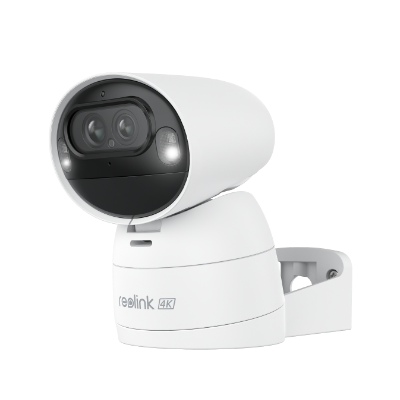Video Multiplexer: Enhance Viewing Experience

In today's rapidly evolving digital landscape, video technology plays a pivotal role in various spheres of life, from surveillance and security to entertainment and communication.
As the demand for efficient video management and monitoring grows, the need for advanced solutions that can seamlessly integrate and handle multiple video streams becomes increasingly crucial. Look into video multiplexer, a game-changing technology that revolutionizes the way we view and manage video feeds, enhancing the overall viewing experience and optimizing resource utilization.
What is a Video Multiplexer?
A video multiplexer is a sophisticated device designed to combine multiple video signals from different sources into a single transmission channel or output.
This innovative technology allows users to view, record, and manage numerous video feeds simultaneously, streamlining the viewing experience and eliminating the need for multiple monitors or recording devices.
By consolidating multiple video streams, video multiplexers offer a centralized and efficient solution for video management, making them invaluable tools in various industries and applications.
How do CCTV Video Multiplexers Work?
In the realm of closed-circuit television (CCTV) systems, video multiplexers play a pivotal role in modern surveillance and security setups. These devices receive video signals from multiple cameras installed in various locations, compress and combine them into a single data stream, and transmit it to the desired output, such as a monitor or a digital video recorder (DVR).
By consolidating multiple camera feeds onto a single screen or recording device, CCTV multiplexers enhance situational awareness and enable efficient monitoring of multiple areas simultaneously.
This streamlined approach not only saves valuable time and resources but also ensures that no critical footage is missed, ultimately enhancing the overall security and surveillance capabilities.
Types of Camera Multiplexers for Video
The market offers a diverse range of camera multiplexers to cater to varying requirements and applications. Here are some of the main types:
- Fiber Optic Video Multiplexer: These multiplexers utilize fiber optic cables for data transmission, enabling long-distance signal transmission with minimal signal loss and interference.
- HDMI Video Multiplexer: Designed specifically for high-definition video sources, HDMI multiplexers seamlessly integrate and distribute multiple HDMI inputs to one or more HDMI outputs, ensuring exceptional video quality and resolution.
- Digital Video Multiplexer Recorder: Combining the functionalities of a multiplexer and a digital video recorder, these devices not only consolidate multiple video streams but also provide integrated recording capabilities for enhanced security and monitoring.
- Analog Video Multiplexer: While digital video technologies have gained widespread adoption, many legacy systems still rely on analog cameras and equipment.
How to Choose the Best Video Multiplexers
When selecting the ideal video multiplexer for your needs, several factors should be carefully considered to ensure optimal performance and seamless integration with your existing video equipment and infrastructure.
Number of Channels
The number of channels a multiplexer supports is a crucial consideration, as it determines the maximum number of video sources that can be integrated into the system.
Popular options include 4 channel video multiplexer and 8 channel video multiplexer, catering to various application scales and requirements. It's essential to assess your current and future video source needs to choose a multiplexer with sufficient channel capacity to accommodate all necessary inputs.
Compatibility with Existing Equipment
Ensuring compatibility with your existing video equipment, such as cameras, monitors, and recording devices, is crucial for seamless integration and optimal performance. Before making a purchase, carefully review the multiplexer's specifications and ensure it supports the video formats, resolutions, and connectivity options of your current setup.
Compatibility issues can lead to signal degradation, incompatible outputs, or even complete system failure, undermining the effectiveness of your video management solution.
Resolution
In today's high-definition world, the resolution supported by the multiplexer plays a significant role in determining the quality of the video output. Higher resolutions, such as 4K or Ultra HD, provide superior image clarity and detail, enabling you to discern even the smallest details in your video feeds.
When choosing a multiplexer, consider the resolution requirements of your application and select a device that can handle the desired level of detail without compromising image quality.
Storage Capacity and Scalability
If you plan to record video footage for later review, archiving, or evidentiary purposes, consider multiplexers with ample storage capacity or the ability to expand storage as your needs grow.
Adequate storage ensures uninterrupted recording and easy access to archived footage, while scalability allows you to future-proof your investment by accommodating additional cameras or video sources as your operations expand.
When to Use IP Camera Multiplexer
IP camera multiplexers have become increasingly popular in recent years, offering a flexible and scalable solution for managing and integrating multiple IP-based video streams. These devices are particularly beneficial in the following scenarios:
- NVR/DVR Camera System: IP camera multiplexers seamlessly integrate with network video recorders (NVRs) or digital video recorders (DVRs), enabling efficient management and recording of multiple IP camera feeds from a centralized location.
- Large-scale Setup: For extensive monitoring systems spanning multiple locations or encompassing numerous cameras, IP camera multiplexers offer a centralized solution for consolidating and managing video streams from various sources.
- Traffic Monitoring and Control: In the realm of traffic management and control, IP multiplexers play a crucial role by consolidating feeds from strategically placed cameras along highways, intersections, and other critical infrastructure.
- Alarm Systems: When integrated with alarm systems, IP multiplexers can route video feeds from various cameras to a central monitoring station, enhancing security and enabling prompt response to potential threats or breaches.
Top IP Security Cameras No CCTV Multiplexer Required
While multiplexers offer versatile solutions for managing multiple video streams, some advanced IP security cameras eliminate the need for dedicated multiplexers altogether. Two remarkable examples are the Reolink Go PT Ultra and the Argus Track.
The Argus Track is a cutting-edge 4K dual-lens Wi-Fi solar/battery camera with auto-zoom tracking capabilities. Featuring 4K 8MP Ultra HD resolution, pan-tilt functionality, 6X hybrid zoom, and color night vision, this camera provides comprehensive coverage and intelligent tracking, eliminating the need for multiple cameras or a multiplexer.
4K Dual-Lens Wi-Fi Solar/Battery Camera
4K 8MP Ultra HD, Auto-Zoom Tracking, Pan, Tilt & 6X Hybrid Zoom, Color Night Vision, Dual-Band Wi-Fi.
The Reolink Go PT Ultra, on the other hand, is a groundbreaking 3G/4G cellular security camera with PT capability. Boasting unprecedented 4K UHD resolution and color night vision, this camera offers an exceptional viewing experience without the requirement of a multiplexer.
4K 8MP Wire-Free 4G LTE PT Battery Camera
4K 8MP; Smart Detection; 355° Pan & 140° Tilt; Battery/Solar Powered; Color Night Vision; Smart Real-Time Alert.
FAQs
What does a video multiplexer do?
A video multiplexer combines multiple video signals from different sources into a single output stream. This consolidation allows users to view, record, and manage numerous video feeds simultaneously on one monitor or recording device, streamlining operations and optimizing resource utilization.
What are the applications of multiplexer in real life?
Video multiplexers find extensive applications across various domains. They play a pivotal role in surveillance and security systems by integrating multiple camera feeds for comprehensive monitoring. Traffic authorities employ multiplexers to consolidate video streams from strategically placed cameras, enabling real-time traffic monitoring and incident response.
What are the disadvantages of multiplexer?
While video multiplexers offer numerous advantages, they also present some potential drawbacks. Introducing an additional device into the video signal chain can increase system complexity and introduce potential points of failure. There is a risk of signal degradation or loss of quality due to compression and transmission processes.
Conclusion
Video multiplexers are invaluable tools that elevate the viewing experience by enabling seamless integration and management of multiple video streams. Whether you're seeking enhanced security, efficient monitoring, or a centralized solution for various video sources, these devices offer unparalleled flexibility and convenience.
We encourage you to delve deeper into the world of video multiplexers and share your thoughts on how these remarkable devices and cutting-edge security cameras can revolutionize your viewing experience and streamline your operations.
Search
Be in the Know
Security insights & offers right into your inbox


